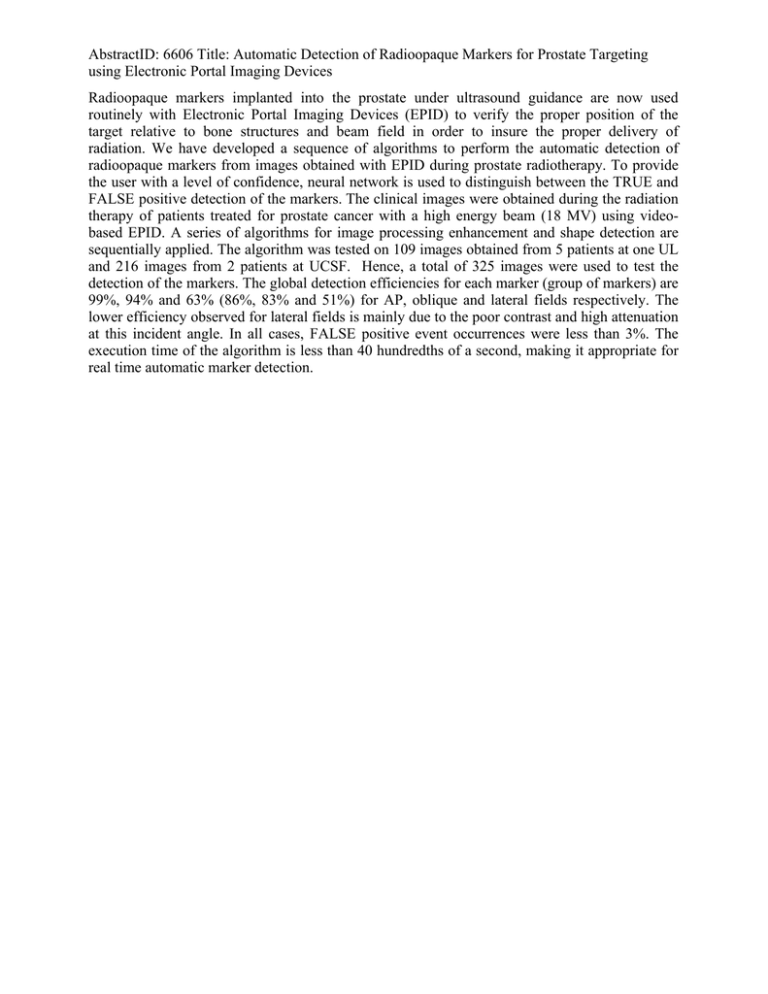AbstractID: 6606 Title: Automatic Detection of Radioopaque Markers for Prostate... using Electronic Portal Imaging Devices
advertisement

AbstractID: 6606 Title: Automatic Detection of Radioopaque Markers for Prostate Targeting using Electronic Portal Imaging Devices Radioopaque markers implanted into the prostate under ultrasound guidance are now used routinely with Electronic Portal Imaging Devices (EPID) to verify the proper position of the target relative to bone structures and beam field in order to insure the proper delivery of radiation. We have developed a sequence of algorithms to perform the automatic detection of radioopaque markers from images obtained with EPID during prostate radiotherapy. To provide the user with a level of confidence, neural network is used to distinguish between the TRUE and FALSE positive detection of the markers. The clinical images were obtained during the radiation therapy of patients treated for prostate cancer with a high energy beam (18 MV) using videobased EPID. A series of algorithms for image processing enhancement and shape detection are sequentially applied. The algorithm was tested on 109 images obtained from 5 patients at one UL and 216 images from 2 patients at UCSF. Hence, a total of 325 images were used to test the detection of the markers. The global detection efficiencies for each marker (group of markers) are 99%, 94% and 63% (86%, 83% and 51%) for AP, oblique and lateral fields respectively. The lower efficiency observed for lateral fields is mainly due to the poor contrast and high attenuation at this incident angle. In all cases, FALSE positive event occurrences were less than 3%. The execution time of the algorithm is less than 40 hundredths of a second, making it appropriate for real time automatic marker detection.



